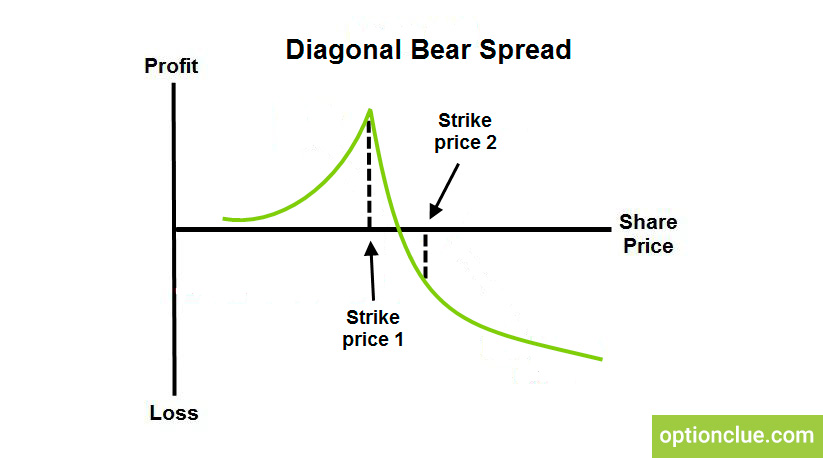Diagonal Bear Spread
Diagonal bear spread is the option strategy with limited risk and profit potential, which lies in the simultaneous buying and selling put options on one asset with different strikes and expiration dates.
Diagonal bear spread is usually used when an investor is bearish on the market in the long-term but has neutral outlook in the near term. For this purpose, he buys a put to earn profit from the downward movement and sells put with a closer expiration date. Therefore, an investor wants at first the underlying asset price to stay around front-month strike and then when the short-term put expires worthless he is going to profit from the purchased put option when the market is falling. After the expiration of the first put option sold, an investor can write another one and then repeat this process until the back-month option expires to earn additional profits from selling short-term options.

Suppose, the underlying asset price is $120. We run the diagonal bear spread by buying the Nov $120 put for $250 and selling the Aug $110 put for $100. The debit is $150. If the price decreases to $115 and stays at this mark till November, this long-term option has $500 in intrinsic value and the Aug put expires out-of-the-money.
Suppose, after the Aug put option expiration, we sell Sep $110 put and, when it expires, we sell the put option with the expiration date in October. Thus, we make additional profit by selling short-term options and at the same time, we hedge our position with the help of long-term put option bought earlier. That means we have the opportunity to develop a position and respond flexibly to changes in market realities.
Extra profit from selling these options is $200 ($100 * 2) and total profit is $550 ($500 + $200 – $150). If the price increases to $130 and stays at this mark till November, we will suffer losses which equal $150 (entire investment).
